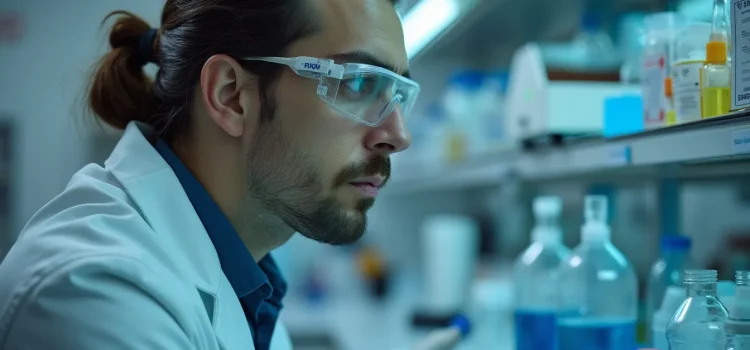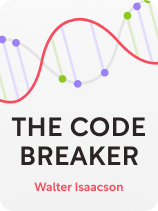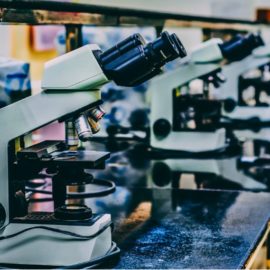

This article is an excerpt from the Shortform book guide to "The Code Breaker" by Walter Isaacson. Shortform has the world's best summaries and analyses of books you should be reading.
Like this article? Sign up for a free trial here.
Is it ethical to edit human genes? What are the potential consequences of CRISPR technology?
Walter Isaacson explores the ethical issues of CRISPR technology in his book The Code Breaker. He wades into the debates surrounding germline editing, medical interventions versus enhancements, and the potential for increased inequality.
Continue reading to discover the complex moral landscape of this groundbreaking technology.
Ethical Issues of CRISPR Technology
In his book, Isaacson discusses what the advent of CRISPR technology means for society. First, we’ll introduce the ethical issues of CRISPR gene editing. Then, we’ll explain how scientists and policymakers have addressed these issues so far.
Ethical Issue #1: Germline Editing
Isaacson says that most people think it’s morally OK to edit somatic cells—non-reproductive cells that affect only an existing person’s bodily composition. But people disagree about whether it’s OK to edit germline cells, which include eggs and sperm. When you edit germline cells, you genetically modify potential future offspring, and the changes you make could be inherited by their offspring as well. Isaacson describes a few opinions on each side of the debate.
Some people who are against germline editing argue that it’s wrong because it’s heretical or unnatural—either God or nature (via evolution) designed our genes the way they are for a reason, so humans shouldn’t interfere. Isaacson says this argument may not be logical: If nature or God endowed us with the ability to develop and use CRISPR, then using it can’t be unnatural or heretical. He also notes that genes aren’t distributed fairly—some people suffer more than others for no reason other than the luck of the genetic draw—and we may be morally obligated to even the playing field. However, Isaacson recognizes some existential risks of germline editing: We might develop hubris and become ungrateful for what nature or God gave us.
Some people who are in favor of germline editing argue that we have a moral duty to set our children up for success. Philosopher Julian Savulescu calls this stance “procreative beneficence.” Isaacson says that germline editing would accomplish this goal more efficiently than somatic editing. To illustrate, consider the blood disorder called sickle cell disease: Somatic edits can cure individuals, but germline edits could prevent their descendants from developing sickle cell disease in the first place. Theoretically, this would improve human life by leaps and bounds. But there’s also a downside to making germline edits—we might decrease genetic diversity, which is an evolutionary disadvantage.
Ethical Issue #2: Interventions vs. Enhancements
Isaacson says that scientists aren’t likely to abandon germline editing research, so society must determine under what conditions germline editing should occur. He describes a continuum of conditions that are under heavy debate by experts in the field. Many people believe germline editing is only OK when it serves as a medical intervention (with sickle cell, for example). They don’t believe it’s OK to unnecessarily enhance germline cells (like editing genes to make children conventionally attractive). They view genetic enhancements the way most people view the use of performance enhancement drugs in sports—they give people an unfair advantage and undermine the significance of talent, merit, and success.
But Isaacson explains that the boundary between interventions and enhancements is sometimes unclear—for example, acne is both a medical and cosmetic issue. This issue becomes even murkier when we consider that certain genes often have disadvantages and advantages. For example, inheritable mental illnesses are associated with higher creativity. If we edited out mental illnesses to reduce suffering, it might have a negative effect on the arts.
Ethical Issue #3: Inequality
Finally, Isaacson says that many people are concerned that the advent of human gene editing technology could exacerbate inequality. Gene editing therapies of all types—somatic and germline, interventions and enhancements—are likely to be extremely costly. Therefore, they’d only be available to wealthy people. In the case of germline edits, the edits would be inheritable, which means wealthy people’s descendants would be genetically advantaged. Over time, this could significantly widen the gap between rich and poor people—wealth and poverty would be inscribed in our genetic makeup, leading to clearly apparent differences in our features and abilities.
(Shortform note: It’s possible that non-human gene editing could exacerbate global inequalities, too. Experts note that CRISPR is transforming the agricultural industry, as scientists use gene editing to produce more nutritious food sources that are less susceptible to blight, other diseases, and drought. This seems like a good thing on its face—but these methods are costly to research, develop, and implement, and they may not be accessible to low-GDP nations. Thus, CRISPR’s use in agriculture may widen the gap between rich and poor people on a global scale, which may in turn be genetically inscribed due to the inheritable epigenetic consequences of poor nutrition. Some experts are therefore calling for the democratization of CRISPR gene editing technology.)
For this reason, writes Isaacson, some detractors argue that gene editing should be strictly regulated (if it’s allowed at all) so that it can only benefit society, not make it worse. On the other hand, some proponents of gene editing believe that free-market capitalism entitles us to make the best choices available to us given our individual means. For those on this side of the debate, individual freedoms outweigh any concern for the potential cumulative effects gene editing may have on society.
(Shortform note: When it comes to public health, barriers to regulation are growing. The US Supreme Court ruled in 1905 that the government has the right to supersede individual freedoms to protect public health when necessary; this ruling served as the basis of government-mandated health regulations like quarantines and mask requirements during the Covid-19 pandemic, and it’s also used to justify the enforcement of vaccination programs. But the growing tension between individual freedom and collective responsibility (exacerbated by the anti-vaccination movement and Covid-related political developments) may result in ideological barriers to CRISPR regulation alongside already-existing bureaucratic barriers to regulation.)
Policies in Response to CRISPR-Related Ethical Questions
Isaacson explains that, when the field of bioengineering gained steam in the 1970s, scientists immediately recognized two threats. First, their research had serious consequences for society. Second, they might face government interference if they didn’t prepare for these consequences responsibly. Therefore, scientists gathered at conferences to create their own policies governing bioengineering research ethics.
(Shortform note: To clarify, gene editing is only one form of bioengineering, a practice that encompasses any method of altering an organism’s DNA (including the creation of genetically modified organisms, or GMOs). It’s possible that bioengineers took their cue to self-regulate because of the 1974 passage of the National Research Act, a law that resulted in tighter regulations of biomedical research in the wake of the Tuskegee scandal. The Tuskegee scandal was a decades-long study in which scientists infected Black American participants with syphilis without their consent and failed to treat them after a treatment was discovered. Research ethics came under broader scrutiny following the exposure of this study.)
After Doudna invented CRISPR gene editing technology, she had a nightmare that Adolf Hitler wanted to use it for nefarious purposes. Isaacson says that this dream, along with other fears about the potential consequences of her invention, led her to revive the tradition of science policymaking. She helped organize a 2015 conference where, after much debate, researchers concluded that germline gene editing research should be paused until scientists knew more about the risks it posed and could come up with safe, ethical research guidelines. However, germline gene editing research later resumed.
(Shortform note: It’s not uncommon for scientists who make major technological advancements to fear the potential outcomes of their research—for example, J. Robert Oppenheimer expressed anxiety and remorse after he helped develop the atomic bomb, and Mary Shelley famously explored the theme of a scientist’s regret in her novel Frankenstein. Doudna took pains to ensure that her invention wouldn’t be used nefariously—and in 2023, the summit she organized reconvened to update their guidelines. They established that it’s okay to do germline gene editing research, but it’s not safe to do germline experiments that will lead to the birth of gene-edited humans.)
Exercise: What’s Your Opinion on CRISPR Ethical Issues?
CRISPR is already changing the world in significant yet controversial ways. Reflect on what you make of the moral quandaries CRISPR presents.
- Think back to the arguments Isaacson lists for and against germline editing. How do you think germline editing could transform the world? Do you view these transformations positively or negatively, and why?
- Isaacson says that most people are OK with using CRISPR for medical interventions, but not for making unnecessary genetic enhancements. What’s your opinion on this issue?
- Isaacson says some experts fear that widespread use of CRISPR technology could exacerbate inequality, so they believe CRISPR should be tightly regulated. What do you think about this potential outcome? What policies, if any, should be implemented to account for it?
- Given what you know about how CRISPR is already being used, how do you think it will transform the world in your lifetime and in the generations to come? How would you characterize these transformations—positive, negative, or mixed?

———End of Preview———
Like what you just read? Read the rest of the world's best book summary and analysis of Walter Isaacson's "The Code Breaker" at Shortform.
Here's what you'll find in our full The Code Breaker summary:
- The fascinating story of the groundbreaking CRISPR gene editing technology
- Why CRISPR presents scientists and citizens with serious moral quandaries
- How CRISPR has already changed life as we know it—and how it has the potential for even more






